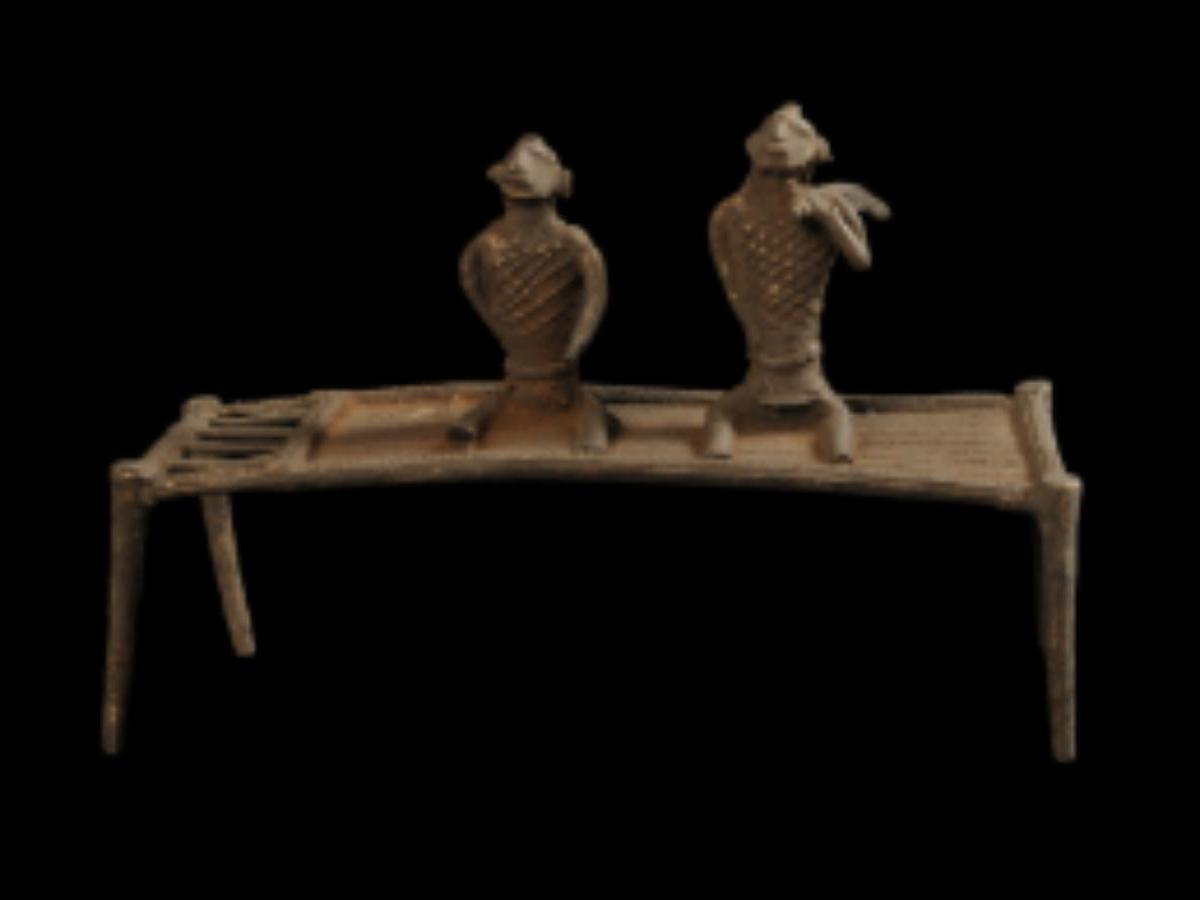State
Tribe Name
Art Type
short description
The Cot with Two Human Effigies is a breathtaking specimen of brass sculpture made by the time-honored Dokra techniques, or the lost wax process. This work from Odisha immortalizes an intimate yet symbolic event important in the life of the Kondh—one of the major tribal communities in the area. It shows a rectangular cot designed somewhat like traditional wooden-jute beds set in fine detail with leaf motifs along all the edges. Seated upon top of it are two human figures, presumably symbols of a newly-wedded couple. The two Konds sitting on the cot, male and female figures, appear to be put in relaxed mode, legs stretched out, thus celebrating a moment of companionship and comfort. The male figure maintains a grasp of a stick in the left hand-most likely symbolizing an act of protection, strength, or authority. Such a representation would resonate with real-life customs with the Kondh where newlyweds would be seen resting on the cot-just sharing quiet moments after the wedding ceremony. This sculpture thus becomes prolific in the artistic sense but represents the social rituals and emotional ties of the tribe.
Thumbnail

Filter Postion
Left
Filter Background
Off
Theme
Filter Header Image

content
Image

description
The Cot with Two Human Effigies is a breathtaking specimen of brass sculpture made by the time-honored Dokra techniques, or the lost wax process. This work from Odisha immortalizes an intimate yet symbolic event important in the life of the Kondh—one of the major tribal communities in the area. It shows a rectangular cot designed somewhat like traditional wooden-jute beds set in fine detail with leaf motifs along all the edges. Seated upon top of it are two human figures, presumably symbols of a newly-wedded couple. The two Konds sitting on the cot, male and female figures, appear to be put in relaxed mode, legs stretched out, thus celebrating a moment of companionship and comfort. The male figure maintains a grasp of a stick in the left hand-most likely symbolizing an act of protection, strength, or authority. Such a representation would resonate with real-life customs with the Kondh where newlyweds would be seen resting on the cot-just sharing quiet moments after the wedding ceremony. This sculpture thus becomes prolific in the artistic sense but represents the social rituals and emotional ties of the tribe.
Dokra art has been practiced throughout eastern India for centuries. The statement that Dokra art is distinguished by its raw, expressive forms and technical brilliance echoes throughout the writings. Each piece is crafted using a unique mold, which creates exclusivity in a piece (Allchin & Allchin, 1982). This cot effigy is indeed a cultural document retaining the warmth and value system of life of the Kondh people.
Dokra art has been practiced throughout eastern India for centuries. The statement that Dokra art is distinguished by its raw, expressive forms and technical brilliance echoes throughout the writings. Each piece is crafted using a unique mold, which creates exclusivity in a piece (Allchin & Allchin, 1982). This cot effigy is indeed a cultural document retaining the warmth and value system of life of the Kondh people.
Image Mode
landscape
promoted
On
Verified
Off
